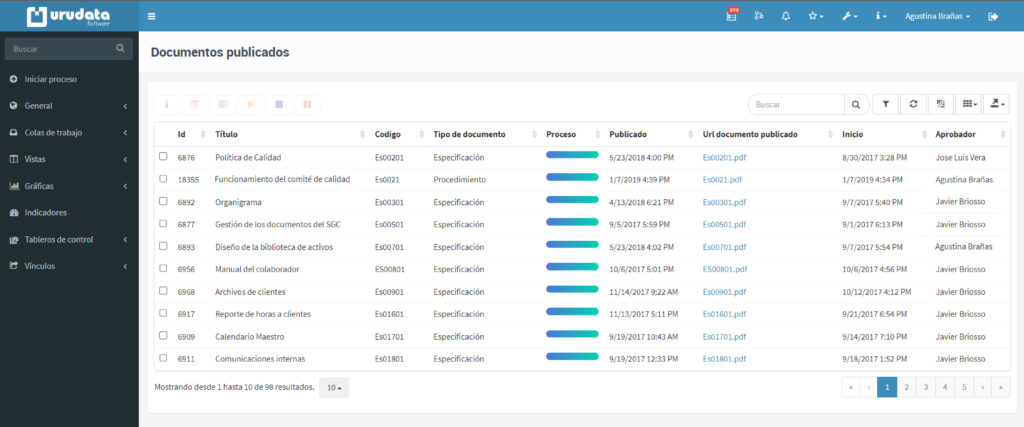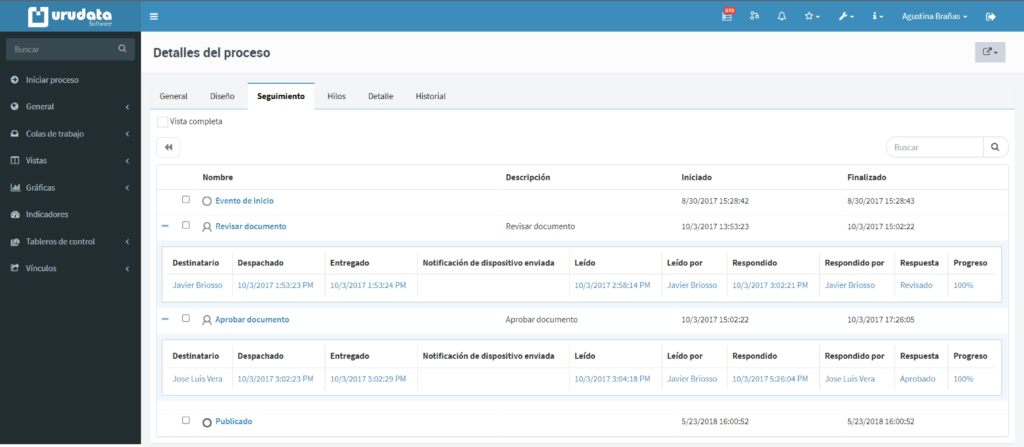Introduction
Audits are an essential part of any Quality Management System (QMS). They involve a systematic and independent assessment to determine whether a QMS meets established requirements and is effective in achieving its objectives. Additionally, audits allow us to identify areas for improvement.
In this article, we will delve into audits, their objectives and benefits, and how BPM software can facilitate their execution.
Audit objectives
As discussed in the article How to implement a quality management system in your company, conducting audits is a key step in achieving this goal.
Audits can be internal or external:
Internal audits are frequently conducted by the organization’s own personnel and aim to assess the QMS’s compliance with established requirements.
External audits are performed by an independent auditor with the goal of verifying compliance with ISO 9001 requirements and providing formal certification. In our article Mastering ISO 9001: Strategies for successful implementation and certification, we explore the audit process, including its various stages required to obtain certification in the mentioned standard.
Audit benefits
Audits offer several benefits to organizations, including:
Quality improvement
Audits help identify improvement opportunities that can contribute to enhancing the quality of products and services.
Risk Reduction
Audits help identify and mitigate risks that may impact the quality of products and services provided.
Customer satisfaction improvement
Audits help ensure that customer requirements are met.
Efficiency and effectiveness improvement
Audits help identify inefficient or ineffective processes that can be improved.
Advantages of using Qflow for managing a QMS for audits
Process Monitoring
A fundamental feature of Qflow BPM software is that processes automated using this tool are 100% auditable.
This is highly useful, allowing for a detailed tracking of tasks within your organization. It enables the visualization of process paths and actions, providing insight into actors involved in each action, along with date, time, and information available at that point in the process.
This provides organizations with evidence that processes have been implemented and followed correctly, crucial for QMS as processes must be auditable to ensure compliance.
Audit example, to request the company’s quality policy.
By automating the QMS documentation management with Qflow‘s, according to what we saw on the article BPM Software for quality management: Manage your quality documents and actions with Qflow, one can easily access the specific process where the quality policy was approved, track it graphically, and view detailed information.
To enable this, we can generate a custom view on Qflow Task displaying all published QMS documents with key metadata such as name, code, document type, or approver. From this view, direct access to the document is possible by clicking on its link.

Here, one can locate the document of interest, such as the quality policy, and enter to view the process details.
Tracking the process the quality policy document: Design and Monitoring.
The process flow is visualized, allowing for a visual and straightforward tracking of all tasks that had to be completed for the document to be finally published as part of the QMS.
In the Monitoring tab, detailed information is accessed, showing for each task who performed it, on what date and time, what response was given, and even the form that was observed when responding to the task.

This facilitates audits as there is traceability of processes through a reliable and transparent source of information.
Document management is just one of the many processes that can be automated with Qflow, given the tool’s flexibility to adapt to any business process and organization.
All processes automated with this BPM software within the scope of our QMS can be easily audited in the detailed manner described above.
In the article Traceability and Process Tracking with Qflow: 100% Audit, you can find more information about this feature and how easy it is to know the details of each process.
Process measurement
Process measurement is an essential part of any QMS audit. Auditors need to collect data on process performance to assess compliance with established requirements.
Qflow provides tools for process control and measurement. This functionality allows measuring the time it takes to complete an individual task or a sequence of tasks within a larger process, identifying bottlenecks, for example, to monitor and improve process performance.
Conclusions
Audits are a fundamental tool for quality management. The use of Qflow can facilitate audits and help organizations improve their quality, efficiency, and effectiveness.
Is your organization currently undergoing audits? If so, Qflow can help! Schedule a free demonstration today, and let’s explore together the features and possibilities that this BPM software offers.






